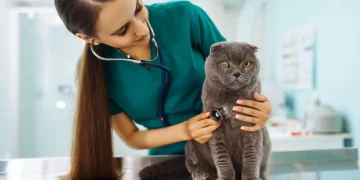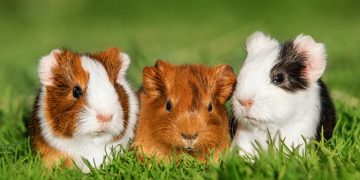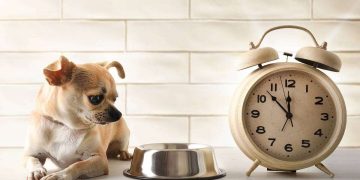Introduction:
One of the most common challenges dog owners face is leash pulling. While walking your dog should be a pleasant experience, a dog that constantly pulls on the leash can turn a simple stroll into a tug-of-war. Not only is this behavior frustrating, but it can also be tiring for both you and your dog. Moreover, if left unaddressed, leash pulling can lead to potential injury for both you and your pet, especially if your dog is large or strong.
In this article, we will explore effective techniques and training tips to teach your dog to walk calmly by your side without pulling. With consistency, patience, and positive reinforcement, you can turn walks into a more enjoyable experience for both of you.
1. Why Do Dogs Pull on the Leash?
Before diving into training methods, it’s important to understand why dogs pull on the leash in the first place. Dogs may pull for several reasons:
- Excitement: Dogs are naturally curious and excited, especially when they’re heading outside for a walk. The leash is their way of getting closer to their destination (whether it’s a park, a smell, or something else), and pulling is often a reaction to that excitement.
- Lack of Training: If your dog has never been taught proper leash manners, they may simply be walking in the way that comes naturally to them—pulling.
- Inconsistent Reinforcement: If pulling sometimes results in reaching a desired spot (like getting to a tree or sniffing a particular area), your dog may associate pulling with achieving their goal.
- Inadequate Equipment: Some dogs may pull simply because they are wearing a collar or harness that doesn’t provide enough control or comfort, making them more likely to pull ahead.
2. Training Your Dog to Walk Nicely on a Leash
Training your dog to walk on a loose leash takes time and patience. However, with consistent practice, most dogs can learn how to walk calmly without pulling. Below are several proven training methods to address leash pulling:
A. Use Positive Reinforcement
Positive reinforcement is one of the most effective training methods for modifying your dog’s behavior. When your dog walks without pulling, reward them with praise, treats, or play to reinforce the behavior.
Steps:
- Start in a Low-Distraction Area: Begin training in an area with minimal distractions, such as your backyard or a quiet street. This will help your dog focus on you and the task at hand.
- Wait for Calm Behavior: Before you start walking, wait for your dog to stop pulling and show calm behavior. You can use treats to lure them into the right position.
- Reward for Loose Leash Walking: As soon as your dog starts walking with a loose leash, offer praise and treats. If your dog walks next to you without pulling, reward them frequently to reinforce the behavior.
- Use Treats and Praise as Motivation: Carry high-value treats (something your dog loves) and praise your dog whenever they walk calmly by your side. The reward should be given immediately after they stop pulling so they can connect the reward with the correct behavior.
B. The “Stop and Go” Method
The “stop and go” method helps teach your dog that pulling leads to a lack of progress. By stopping whenever your dog pulls and only continuing when the leash is loose, your dog will begin to associate loose leash walking with forward movement.
Steps:
- Start Walking: Begin walking with your dog on a leash.
- Stop When They Pull: If your dog starts pulling ahead, stop walking immediately. Don’t move forward until the leash is loose.
- Wait for Calm Behavior: Wait for your dog to stop pulling and relax, which may take a few moments. You can encourage them to come back to your side by calling their name or using a treat.
- Resume Walking: Once the leash is loose and your dog is calm, resume walking. Repeat this process each time your dog starts to pull.
- Be Consistent: The key is consistency—never reward pulling by continuing to walk. Your dog will quickly learn that pulling results in stopping, and walking calmly beside you allows them to keep moving.
C. Change Directions
If your dog continues to pull despite the “stop and go” method, changing directions can help redirect their focus and keep them engaged with you. This technique is especially effective for excitable dogs who get distracted easily.
Steps:
- Start Walking: Begin your walk as usual.
- Change Directions When They Pull: When your dog pulls ahead, immediately turn around and walk in the opposite direction. This sudden change will surprise your dog and get their attention.
- Encourage Them to Follow: As you change directions, encourage your dog to follow you by calling their name or using a treat to guide them.
- Reward for Following: When your dog follows you, reward them with praise and treats. This helps them understand that following you is the desired behavior.
- Repeat: Keep changing directions whenever your dog pulls, ensuring that you remain calm and consistent throughout the process.
D. Use a No-Pull Harness or Head Collar
For dogs that are particularly strong or difficult to control on a regular harness or collar, a no-pull harness or head collar can provide additional control and help reduce pulling.
- No-Pull Harness: A no-pull harness is designed to discourage pulling by redirecting your dog’s movement when they pull on the leash. When your dog pulls, the harness will tighten gently around their chest, making it uncomfortable but not painful. This discourages pulling and helps to keep them walking in the right direction.
- Head Collar: A head collar works by gently guiding your dog’s head, as they naturally follow their head movement. This can be particularly helpful for strong or stubborn dogs that pull on the leash.
While these tools can be effective, they should be used in conjunction with positive reinforcement and training, not as a standalone solution.

3. Common Mistakes to Avoid
When training your dog to stop pulling on the leash, there are several common mistakes to avoid:
- Punishing Your Dog for Pulling: Avoid harsh corrections, such as jerking the leash or yelling at your dog. This can cause fear and anxiety, and it may make the pulling behavior worse.
- Not Being Consistent: Consistency is crucial in training. If you allow your dog to pull on some walks but not others, they will become confused and may not learn the desired behavior.
- Using Too Much Tension: If the leash is constantly tight, it may reinforce pulling. Try to keep the leash loose whenever possible, and only pull back gently if necessary.
- Not Rewarding Enough: Dogs learn best when they are consistently rewarded for good behavior. Be sure to reward your dog frequently when they walk on a loose leash.
4. Patience and Persistence Are Key
Training your dog to walk without pulling on the leash requires time, patience, and consistency. Some dogs may catch on quickly, while others may take a bit longer to learn. The important thing is to remain patient and to practice regularly.
Training sessions should be short (5-10 minutes) but frequent, as dogs tend to learn better through short bursts of focused attention. If you feel frustrated, take a break, and remember that progress may be slow, but every step counts.
5. Conclusion
Leash pulling is a common behavior issue, but it can be effectively addressed with consistent training and positive reinforcement. By using techniques such as the “stop and go” method, changing directions, and rewarding calm behavior, you can teach your dog to walk calmly by your side. Additionally, using the right equipment, like a no-pull harness, can help make training easier and more effective.
With patience, persistence, and consistency, you can transform your walks into a more enjoyable experience for both you and your dog. Happy walking!























































